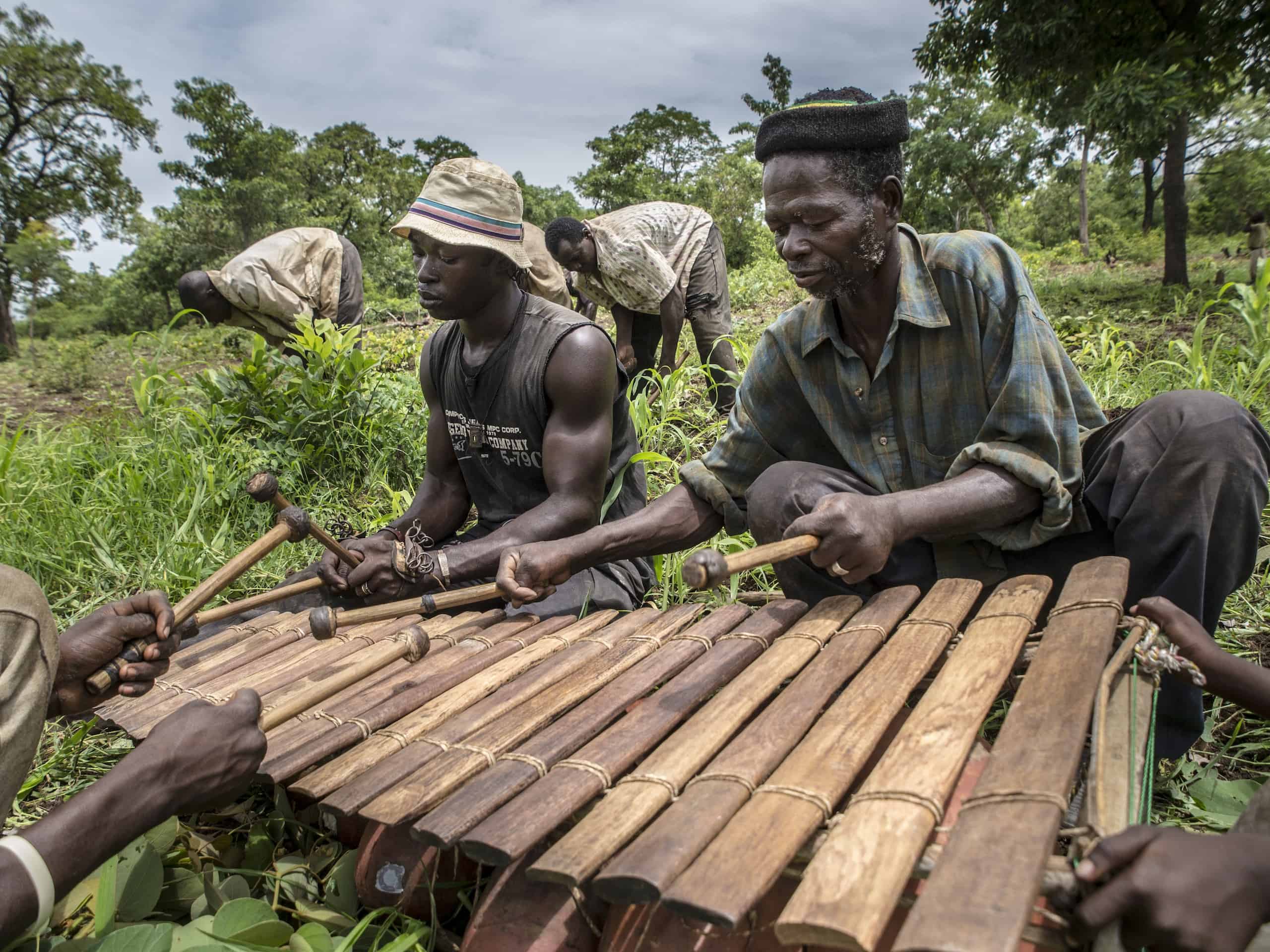The Baan in Karankasso Sambla
Sambla is a small ethnic group constituted by circa 15000 units. These people live in the southwestern part of Burkina Faso. In January and July 2012, Lorenzo Ferrarini and Nicola Scaldaferri made a research on the musical practices of Karankasso Sambla, the main village in this area. The work went on while Lorenzo Ferrarini was doing his PhD fieldwork research (august 2011-august 2012) on local models of hunting tradition (for more information click here ). The main focus of the scholars was the xylophone called baan. Baan is the most important musical instrument used by this population on different occasions. In a first place, they made a detailed footage of its construction: cutting the tree, preparing the wood, the construction of the bars. Then the drying in the stove, tuning it, the use of gourds as resonators up to the final stage: the ritual sacrifice of a hen.
The use of this instrument and the particular way it is played has been documented: three musicians, one having the main part and the two others for accompaniment. Baan is a an instrument that speaks. The Sambla is a tonal language, that is, the meaning of a word is defined by the tones used in its pronunciation. In line with the intonation profiles, the musical instrument can convey semantic messages. Baan is played usually on public social occasions, such as feasts or funerals. In these cases is accompanied by drums, primarily the hourglass drum known all over the area as lunga (dunu in Sambla language). It is used also during in the field, in this case played by a single musician. The latter ties it in his body and plays walking near the workers. Thanks to the instrument’s language, the musician dictates the rhythm and incites the men at work, calling them by name.
The musicians and the crafters of musical instruments in Karankasso are people that belong to family clans and are strictly structured. They are professional musicians. In Western Africa they are named griot (in Sambla ka, plural ke). In Karankasso, the baan belongs to the members of a family clan, the Konaté. The same can be said also for the drums that are constructed and played by the Traoré family. The members of these families live at the edge of village’s life, in the suburb quarters. They marry between each other or with family members from other villages that work in the same field. A part of this research was concerned with kin relations between two families and the reconstruction of their genealogical trees. This line confirmed the important role of ke’s endogamy in Karankasso. Another topic of this research included besides baan, the observation and documentation of the rich musical practices in the village. The latter had no connection with ke activity and pertained to forms of entertainment or domestic activities such as the use of the musical bow, the narrative songs, the rhythmic chipping of cereals with wooden mortars or stone mills. ( For further details see this site).


Recent Comments